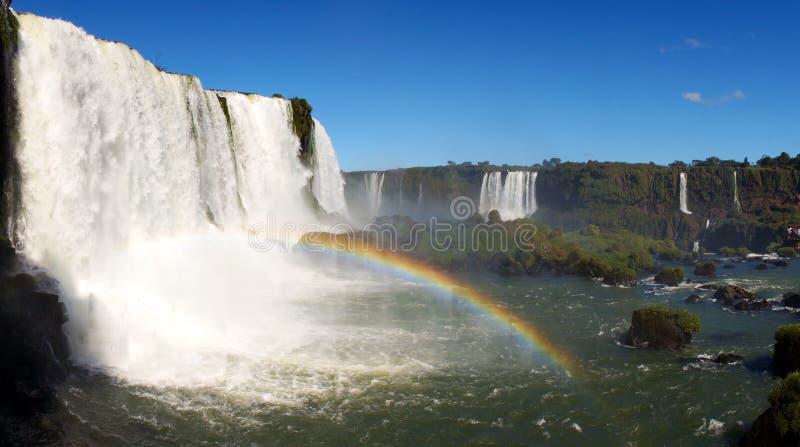When one mentions natural wonders, few places evoke a sense of awe quite like Iguazu Falls. This iconic cascade, straddling the border between Brazil and Argentina, has captivated visitors for generations with its majesty and the symphony of sound that accompanies its torrents. Yet, among the tourists who flock to its banks, there lies an intriguing question: when is the best time to witness the ethereal rainbows that dance above its powerful surges and to appreciate the raw, almost primal, roars of water that define this enchanting vista?
To unravel this question, we must consider a variety of factors, including climate, tourism patterns, and the specific phenomena of rainbows themselves. The unique geography of the Iguazu Falls plays a significant role in both the timing and quality of these spectacular occurrences. Here, at the confluence of natural beauty and meteorological conditions, visitors can experience the mystical interplay of light and water.
Understanding the Climate
Iguazu Falls is nestled in a subtropical region, which bestows it with a verdant ecosystem and moderate rainfall throughout the year. However, the subtropical climate also means that the area undergoes significant seasonal variations. Generally, the wet season stretches from November to March, characterized by higher humidity and afternoon thunderstorms. This can lead to dramatic increases in water flow, creating an impressive roar that reverberates through the surrounding forest. For those who appreciate the sheer power of the falls, this can be a compelling time to visit.
The dry season, on the other hand, typically lasts from May to September. During these months, the water levels can dip, providing clearer views of the falls and opportunities for more extended exploration of the surrounding trails. It’s essential to note that while the dry season sees fewer tourists, it also invites the possibility of rainbows—bright arcs of color that can appear when sunlight interacts with the mist generated by the falls.
The Best Times for Rainbows
Two critical factors influence the appearance of rainbows at Iguazu Falls: sunlight and moisture in the air. For optimal conditions, early mornings or late afternoons offer the best chances — when the sun is low enough in the sky to cast its light onto the falls at the right angle. Typically, the months of July to September produce the most vivid rainbows due to the drier weather which increases the visibility of these stunning optical phenomena.
However, it’s not just the time of day that matters. Engaging with the changing weather patterns can also yield delightful surprises. The transitional months, particularly at the beginning of spring (October), present an intriguing balance between the residual humidity from the dry season and the onset of rainy weather, which can lead to spontaneous bursts of sunlight penetrating the mist.
A Unique Perspective of the Falls
While many flock to the popular viewing platforms, those looking for a more tranquil experience may explore lesser-known trails that meander through the surrounding jungle. When rainbows do materialize amidst the cascades, the serenity of the surrounding landscape enhances the sense of wonder. Here, the mundane disappears, and one becomes attuned to the harmonious relationship between nature’s raw power and its aesthetic beauty.
Moreover, the sounds of Iguazu Falls are as enticing as its sights. The roar of cascading water can resonate in a way that stirs the soul. In moments of quiet, when the tourists have thinned, one can truly appreciate this auditory marvel — a reminder of nature’s unparalleled force that aligns perfectly with the visual splendor of rainbows.
The Allure of Iguazu Falls
The fascination with Iguazu Falls extends beyond the impressive sights and sounds. It’s tied to deeper emotions, evoking wonder, reverence, and sometimes introspection. The trademark of nature to erase human constructs and present humbling realities is palpable here. As visitors stand before the expanse of water, the sensation is akin to standing at the very edge of the wild — where one feels both infinitesimally small and profoundly connected to the greater world.
Additionally, the cultural significance of such landmarks cannot be overlooked. The indigenous peoples of the region regard Iguazu Falls with a mix of reverence and respect, integrating local myths and histories into the very essence of the place. Understanding these narratives adds layers to the experience, fusing beauty with storytelling — an encounter that transcends the physical location.
Planning Your Visit
For those yearning to witness the enchanting rainbows of Iguazu Falls while absorbing its compelling roars, careful planning is essential. Arriving in either the shoulder seasons—late spring or early fall—may afford a unique opportunity to escape the crowds while still enjoying moderate weather and optimal conditions for photographs. Keep in mind that the optimal viewing conditions for both the falls and rainbows hinge on both natural occurrences and a stroke of luck.
Equipped with knowledge of the ideal conditions, visitors can embark on an incredible journey, bearing witness to one of nature’s most intimate performances. The allure of the rainbows over the thundering falls creates a sensory experience that lingers long after leaving. Ultimately, time spent at Iguazu Falls offers not just breathtaking views but also a chance to reflect on the beauty and ferocity inherent in nature—an essential reminder of our place within this vibrant Earth.
